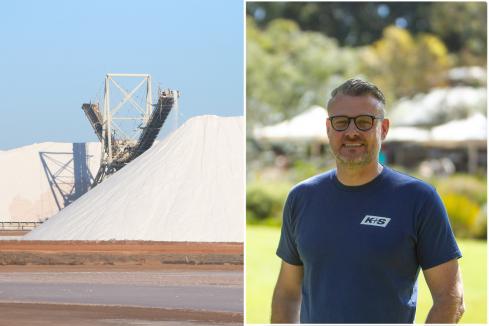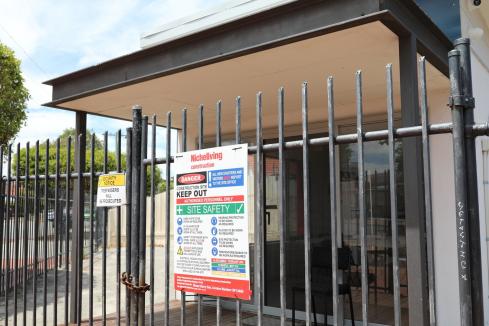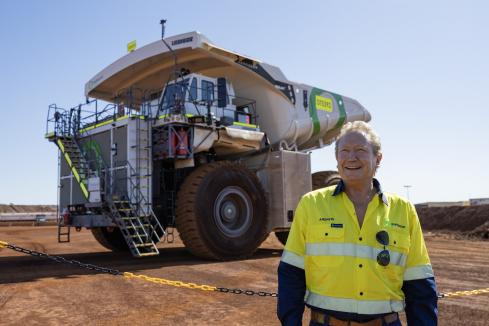One of the first movers in potash has run into trouble, but backers remain bullish about the emerging industry.


It has been a month of mixed fortunes for Western Australia’s potash companies.
The state, after more than a decade of exploration and development, now has its first producer of sulphate of potash (SOP) but the news has been overshadowed by the collapse of one of the first movers in the sector.
Salt Lake Potash, which was placed into the hands of receivers KordaMentha last month, is understood to have needed more capital to continue with commissioning its $269 million Lake Way project, near Wiluna in the Goldfields.
KordaMentha, which will soon market Salt Lake and its assets for sale or recapitalisation, said the business owed about $170 million to its secured creditors, including the Commonwealth Bank of Australia and federal government-owned Clean Energy Finance Corporation.
Salt Lake was predicted to become Australia’s first producer of the fertiliser ingredient but ran aground in May when it revealed a slower than expected ramp up to full production.
The Perth-based company sought to raise a further $28 million, which it said would enable a final debt drawdown for general operating expenses.
That was despite raising more than $150 million since August last year, when Salt Lake declared the project fully funded in August last year.
The hiccup, however, has done little to deter confidence in the industry.
Potash has received considerable support from the federal government, including through the Northern Australia Infrastructure Facility, which has granted more than $700 million in loans to WA’s aspirants in the past few years, with the lion’s share to Kerry Stokes-backed BCI Minerals.
And four SOP developments in WA, including BCI’s, have been given major project status from the federal government, which is intended to allow for accelerated project approvals.

Such support can be linked to the government’s Ag2030 strategy, which aims to grow Australia’s agricultural sector to $100 billion.
With Balcatta-based Kalium Lakes transitioning to producer, the state and the country are well on the way to establishing a new industry, as well as reducing its reliance on imported SOP.
The mineral is favourable to growers as it doesn’t contain chlorine unlike muriate of potash (MOP, potassium chloride), which is a cheaper and a more abundant source of potassium but poses a greater risk of toxicity due to its chloride content.
Demand for SOP fertiliser has been on the rise in recent years, in line with an increase in demand for better quality fruit and vegetables globally.
That’s contributed to a sharp increase in SOP prices, which are forecast to average more than $800 per tonne next year, along with general inflationary pressures.
The strong SOP environment has worked in favour of Kalium Lakes, which emerged as Australia’s first mover last month, when it started commissioning its $280 million Beyondie project in the Pilbara.
About a quarter of its development cost (including commissioning) was funded through NAIF, which granted a $74 million loan to Kalium in 2019.
The company, still in the final stages of commissioning the project, is already working to expand production from a base case of 90,000 tonnes per annum to 120,000tpa.
That’s estimated to cost an extra $45 million.
Kalium noted high SOP prices and the benefits of having an experienced project team on site as key reasons for the early expansion.
The company has an agreement in place with German engineer and equipment supplier Ebtec, which will operate and maintain Beyondie’s purification plant for the first year of production.
Ebtec will carry out the expansion, which is scheduled to be completed before September 2022.
The move was supported by Kalium’s senior lenders, NAIF and Frankfurt-based KfW IPEX-Bank, which agreed to defer the company’s debt repayments until March 2024.
Similarly, Kalium’s royalty holders, which are associated entities of the business, will lower and defer their receipts over certain project tenements until the lenders have been repaid.
Offtake partner K+S Group has committed to the new production target for Beyondie on a ‘take-or-pay’ basis, while agreeing to increased payment terms for the first three years of production.
The expansion has also won the support of investors, with Kalium closing a $50 million share placement last month.
“It was definitely an interesting raise,” chief executive Rudolph van Niekerk told Business News.
“There were a lot of questions around why we were doing the expansion now.
“We had to explain to people how we were going through the process and [how we were] having to deal with some of those challenges that COVID is putting on companies.
“Once we answered questions, people understood why we needed to increase the economics and robustness of the project.
“We were oversubscribed in the end, so it does show that investor support was still there to do the expansion.”
Kalium’s Beyondie project is a sub-surface brine operation that uses sun and wind to evaporate water.
This method creates potassium mixed salts, which are then processed at a nearby plant.
It’s a relatively low-cost method of producing SOP but it’s less common due to its complexity and the limited number of salt lakes containing both potassium and sulphate.
“The biggest challenge with this type of SOP production method is really to get the chemistry right, it’s not just a crushing and screening-type operation,” Mr van Niekerk said.
“We crush the salt down into certain fraction sizes and then through treatment, regulation of temperature and regulation of pressures we change the chemistry and … separate out the unwanted minerals.
“To do that right, every part of the processing needs to be right.”
The most common method to produce SOP is the Mannheim process, which accounts for roughly 50 per cent of all SOP production, according to Kalium.
It works by converting MOP into SOP, which is far less complex than brine processing but more expensive because of its energy requirements.
The Mannheim process is widely used in China, which remains the world’s largest producer and user of SOP fertiliser.
Another challenge for Kalium is bringing in its plant personnel from Germany, with border restrictions and quarantine regulations causing some delays.
But Mr van Niekerk said this was unlikely to materially affect the company.
“The knowledge and the skillset are very specific to a smaller group of people globally,” he said.
“If it [processing] takes us a bit longer, it’s because we have to effectively import the people who understand the process.”
Kalium’s proposed 30-plus year operation was granted major project status from the federal government in August 2019.
It’s also one of three SOP developments to have received support from NAIF, with the others being BCI and Australian Potash.
Both companies have received further loans from the government’s Export Finance Australia.
In the case of BCI, half of the $1.2 billion cost to develop its Mardie salt and SOP project on the Pilbara coast is covered through federal funding.
Financing for the project consists of a $490 million loan from NAIF, $110 million from EFA and $140 million in bank facilities.
The balance of the cost will be equity funded.
BCI chairman Brian O'Donnell said this was expected in the coming weeks based on indications of interest from new and existing shareholders including Mr Stokes’ private investment vehicle, Wroxby, which owns nearly 40 per cent of BCI’s issued capital.
A final investment decision for the project has been made, with main construction work expected to start early next year.
Mardie, which received major project status last August, is slated to produce 5.35 million tonnes of salt and 140,000t of SOP each year over a mine life of more than 60 years.
Meanwhile, Subiaco-based Australian Potash hopes to produce 170,000tpa from its Lake Wells development in the Goldfields where commercial production is targeted for mid-2023.
Managing director Matthew Shackleton told Business News earlier this year Australian Potash was taking a judicious approach to developing its $208 million project.
Like BCI, the company has secured support from NAIF ($140 million) and EFA ($40 million), covering almost 90 per cent of Lake Wells’ construction cost.

Matt Shackleton. Photo: David Henry
Australian Potash is now working to develop the borefield from which brine will be extracted for processing.
It’s expected that 60 per cent of the borefield will be completed in volume before the end of the year.
Mr Shackleton said last month work on the project was progressing as planned except for a few minor delays.
“Equity markets have been a little circumspect about the potash developers here in Western Australia,” he said, attributing caution to external issues faced by early developers in the space.
“The cause of those problems were management issues; they weren’t project fundamental issues.
“It’s easy for [investors] to get confused as to what the cause of those problems were [but] the projects themselves are great and there are many examples … across the globe where these projects operate successfully for decades at very good margins.
“These projects do take time to get right, and it is a patient development game that you need to play.”
Other SOP developments in WA are Lake Mackay and Lake Disappointment in the Pilbara, both of which have received major project status from the federal government.
Agrimin’s $637 million Mackay project was also recently granted lead agency status from the state government, which is set to accelerate approvals even further.
A final investment decision for the project is expected in mid-2022.
Nedlands-based Agrimin hopes to produce 450,000tpa from Mackay over a mine life of 40 years.
Reward Minerals, also based in Nedlands, is targeting 400,000tpa from Lake Disappointment (recently renamed Kumpupintil Lake) for at least 25 years.
The $345 million project includes the Mackay Range tenements, which are being explored by mining major Fortescue Metals Group, as part of a farm-in arrangement signed in November 2019.
Fortescue has the right to acquire an 80 per cent interest in the tenements if it spends $2 million on exploration within four years.

















